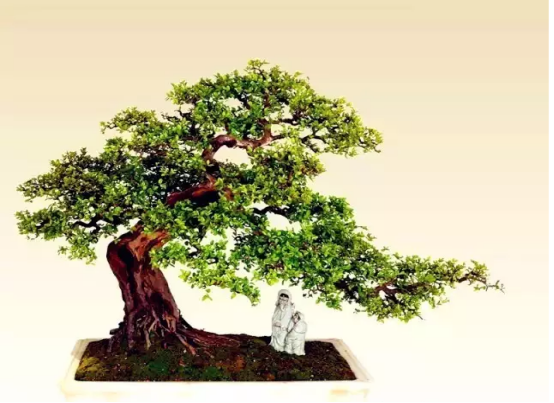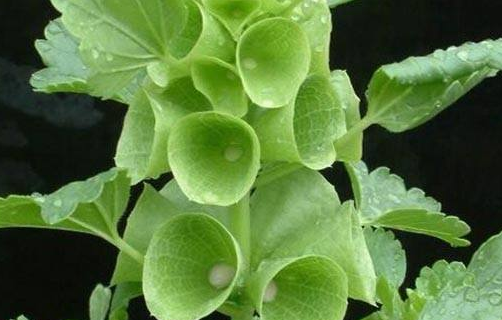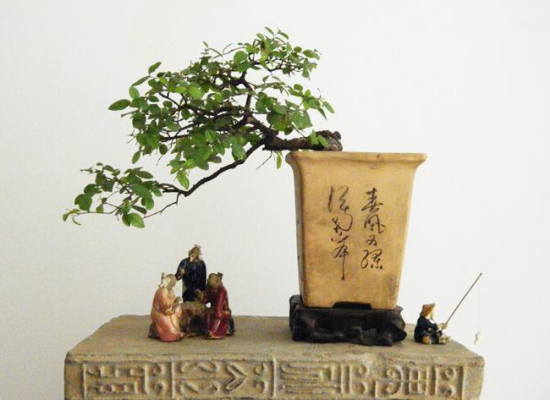Key points of Finch Plum maintenance in Winter
Watering
Finch plum bonsai in winter should pay special attention to how to water, sparrow plum bonsai entered a dormant period in winter, basically do not need water, properly watered or not watered.
Control temperature
Finch plum bonsai is not cold-resistant by nature, so it is necessary to keep warm. In winter, we should move indoors for maintenance, especially in the northern part of our country, where there is sunshine indoors. If you are outside, wrap it with a transparent plastic film, which can be opened every two days when the temperature is high at noon to let the sparrow plum breathe.
Humidity
Finch plum bonsai likes a humid environment, it is best to keep the air relative humidity high, to reach about 70 to 80 percent of the package. If the air relative humidity is too low, the leaves in the lower part of Finch plum will turn yellow and fall off, and the upper leaves will lose their luster. In northern China, there is heating indoors in winter, but it is relatively dry, so it is necessary to spray water to the leaves to keep the environment moist.
Light
In winter, keep sufficient light in winter as much as possible, and try to put sparrow plum bonsai in places with better light, such as living room, bedroom, study and balcony lamp.
Fertilization of sparrow plum bonsai in winter
Finch plum bonsai basically stops growing during the dormant period in winter, the demand for fertilizer is not high, and there is no need to apply fertilizer.

Key points of bonsai conservation and picture appreciation of sparrow plum bonsai
Picture: sparrow plum bonsai
[FAQ] main points of bonsai conservation and picture appreciation of sparrow plum bonsai
[expert answers]
1. Pruning: the sparrow plum stump bonsai can be pruned all the year round, and the overgrown and overdense branches that hinder the shape can be cut off at any time, so that the stump can maintain a beautiful shape, the branches and leaves are dense properly, ventilated and transparent, and the occurrence of diseases and insect pests is reduced.
two。 Fertilization: Finch plum bonsai can be used cake fertilizer, kitchen waste in the tank sealed fermentation, take the upper layer of fertilizer and water 4 times diluted 5 times. Sparrow plum is an acid-loving plant, which should be applied only by adding 1% ferrous sulfate to the retting fertilizer and water; spraying 0.1% urea twice during germination; spraying 0.1% 0.2% potassium dihydrogen phosphate before and after flowering.
3. Watering: be careful not to make the basin soil too wet or too dry. Water once in the morning and once in the evening in the summer. In order to shorten the branches and leaves and make the shape more beautiful, the water can be properly controlled in spring and summer.
4. Turn the basin: Finch plum bonsai should be turned once every 4 years before sprouting in spring, and some old roots, withered roots and overgrown and dense roots should be cut off properly, and the old soil of 1cm 2 should be replaced to cultivate fertile and loose culture soil to promote the growth and development of new roots.
5. Sunshade: Finch plum bonsai has less soil and shallow roots. hot sun exposure can easily cause buds, shoots and leaves to be sunburned or killed. Therefore, it is necessary to shade the sun in summer, build a shade shed or put it indoors, under the eaves, in the shade of trees and other places where there is no direct sunlight.
6. Temperature: Finch plum bonsai has poor cold resistance, easy to freeze and dry up, and even die. Therefore, the winter should be kept indoors, and pay attention to ventilation, the room temperature should be kept above 5 ℃; when the room temperature exceeds 25 ℃, the window can be opened to avoid excessive growth caused by high temperature; when the room temperature is less than 5 ℃, the plastic insulation can be covered (the greenhouse is higher than 5 ℃, that is, remove the plastic bag) when the room temperature is less than 0 ℃, the heating method such as hot water should be used to ensure the Finch plum bonsai to survive the winter safely.
7. Diseases and insect pests: sparrow plum bonsai is vulnerable to diseases and insect pests. The main pests are: tea leaf roll moth, which can be sprayed with 35% phorate emulsion 2000 times; longicorn beetles, which can be smeared with stone-sulfur mixture; and shell insects, which can be washed away manually.
[editor's comments] Finch plum can be divided into big leaf sparrow plum and small leaf sparrow plum. It is best to choose small leaf sparrow plum to plant bonsai, because small leaf sparrow plum is more conducive to bonsai modeling. Above, the first agricultural editor shared with you the key points of the conservation of Finch plum bonsai, and provided some pictures for everyone to enjoy. I hope you like it.
Key points of management of sparrow plum
Sparrow plum, also known as thorn, sparrow plum vine, sour fruit, sour young tree, is a deciduous climbing shrub of the family Rhamnaceae. The bark is grayish brown and the branchlets are slender with needles. Leaves opposite, ovate or elliptic, margin serrulate, thinly leathery and bright green. Light yellow flowers in autumn and winter, drupe nearly spherical, purple-black when ripe, edible, sour and sweet. It is one of the main tree species of Chinese stump bonsai, one of the five famous trees in Lingnan bonsai, and also one of the bonsai plants exported to the United States after China's entry into WTO.
Humidity management: like the humid climate environment, the relative air temperature of the growing environment is 70% to 80%, the air relative humidity is too low, the lower leaves are yellowed and shedding, and the upper leaves are not glossy.
Temperature management: because it is native to the tropics and likes high temperature and humidity environment, it has strict requirements on winter temperature. When the ambient temperature is below 10 ℃, it can not survive the winter safely when the environment temperature is below 10 min. Finch plum
In summer: strengthen the air convection so that the temperature in the body can be released; put it in the semi-shade, or give it 50% shade; spray it properly, 2 or 3 times a day.
In winter: move to a brightly lit place indoors for maintenance; outdoors, wrap it in film for the winter, but uncover the film every two days when the temperature is high at noon to let it breathe.
Light management: like semi-shade environment, can give enough sunshine in autumn, winter and spring, but shade more than 50% in summer. Put in indoor maintenance, as far as possible in places with bright light, such as well-lit living room, bedroom, study and other places. After indoor maintenance for a period of time (about a month), it should be moved to an outdoor place with shade (heat preservation in winter) for a period of time (about a month), so alternately.
Fertilizer and water management: for potted plants, in addition to adding organic fertilizer when potting, proper fertilizer and water management should be carried out in the usual maintenance process.
Spring, summer and autumn: these three seasons are its peak growing season. Fertilizer and water management circulates according to the order of "Huabao"-- clear water-- "Huabao"-- clear water. The interval period is about 1-4 days, and the interval period is shorter during sunny or high temperature days. The interval period is longer or not watered during rainy days or low temperatures.
In winter, during the dormant period in winter, the main task is to control fertilizer and water. Fertilizer and water management circulates according to the order of "Huabao"-- clear water-- "Huabao"-- "Huabao"-- clear water, and the interval period is about 3-7 days. The interval period is shorter in sunny or high temperature days, longer or unwatered in rainy days or low temperature days. For ground-planted plants, fertilizer and water were applied 2 to 4 times in spring and summer according to drought conditions: first, a small trench was opened at 30cm to 100cm outside the root neck (the larger the plant, the farther away from the root neck), the width and depth of the ditch were both 20cm. The ditch is sprinkled with 25-50 jin of organic fertilizer, or 1-5 two-grain compound fertilizer (chemical fertilizer), and then poured with water. After the beginning of winter, before the beginning of spring, fertilize again according to the above method, but do not need watering.
- Prev

How to raise shellfish flowers
Soil shell flower culture has relatively high requirements for soil, requiring loose, breathable, fertile and well-drained soil, the soil should not be viscous, otherwise it will not be conducive to plant growth. We can configure the soil ourselves, or we can go to the florist to buy special soil for shell flowers. Shellfish flowers like the sun very much.
- Next

Five points for attention in the maintenance of Finch Plum
Water sparrow plum conservation water slightly pay attention to, the water used to river water, pond water, Rain Water and other natural water is better. If the tap water needs to be stored for a day or two, it is appropriate to volatilize the chlorine in the water. The water used to wash clothes, the water containing oil stains and salt can not be used. Fertilize sparrow plum in the right amount, too many branches and leaves will grow.
Related
- Fuxing push coffee new agricultural production and marketing class: lack of small-scale processing plants
- Jujube rice field leisure farm deep ploughing Yilan for five years to create a space for organic food and play
- Nongyu Farm-A trial of organic papaya for brave women with advanced technology
- Four points for attention in the prevention and control of diseases and insect pests of edible fungi
- How to add nutrient solution to Edible Fungi
- Is there any good way to control edible fungus mites?
- Open Inoculation Technology of Edible Fungi
- Is there any clever way to use fertilizer for edible fungus in winter?
- What agents are used to kill the pathogens of edible fungi in the mushroom shed?
- Rapid drying of Edible Fungi

